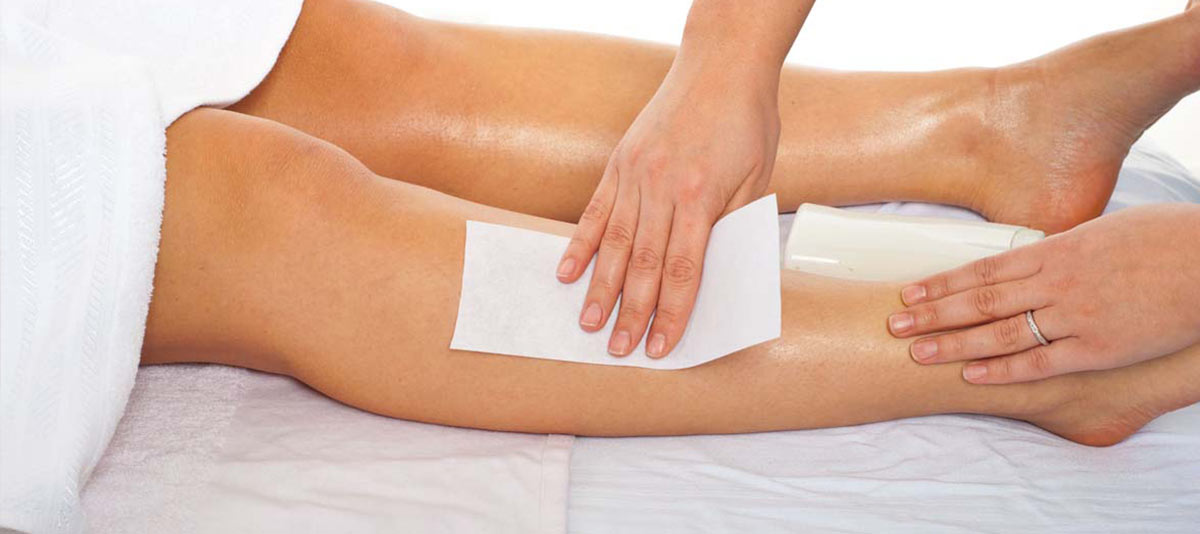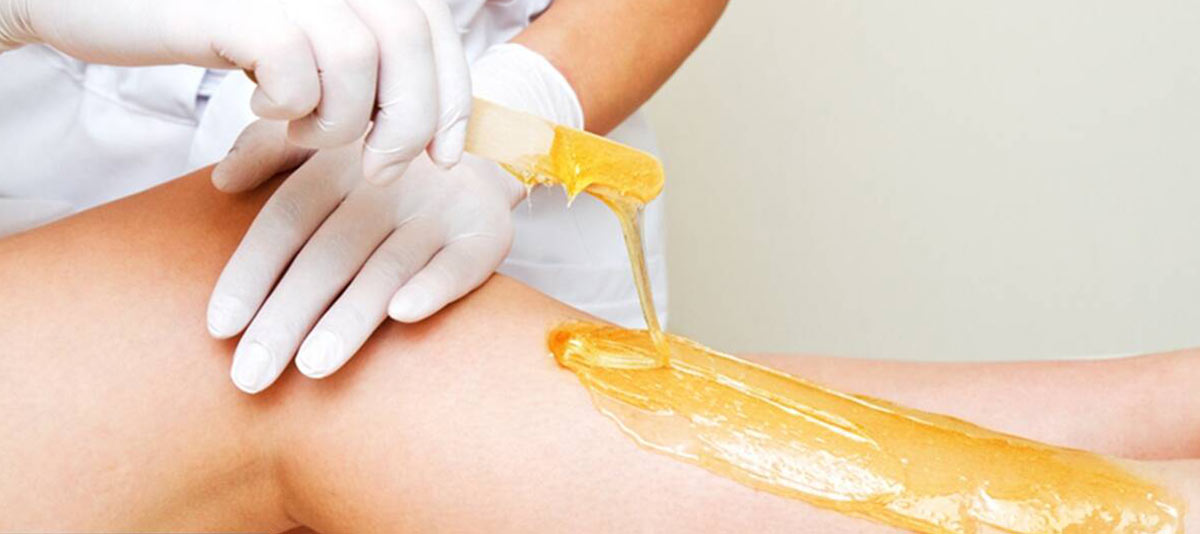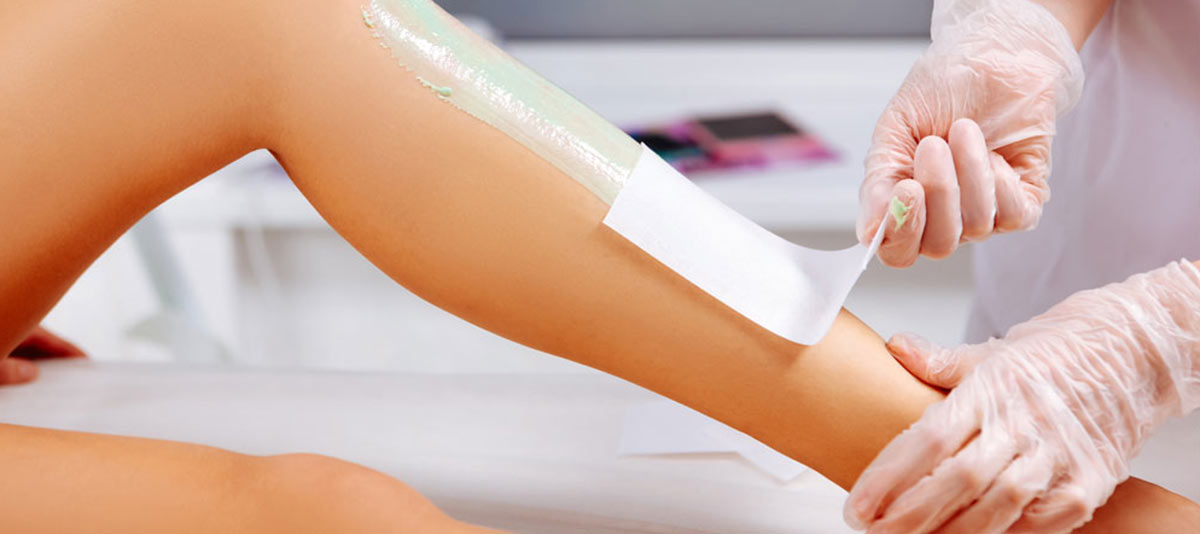Body hair is a furry fact of life. But for whatever reason, you might want to remove it. Maybe you think your happy trail looks a bit like a dream. Or maybe your peach fuzz doesn’t feel so peachy. You can grab a razor, but if you want results that last for weeks without stubble, your best bet is waxing. If you’re the DIY type who likes to save money and time, you might be giving up on going to the salon in favor of at-home hair removal.
But all waxing jobs require safety precautions to avoid injury or infection. Here’s how to complete your home waxwork job safely and confidently.
1. How to Prepare Your Skin for Waxing
Waxing removes hair by the follicle—meaning it uproots your body hair—allowing bacteria to enter the open follicle. In many cases, waxing also removes the dry top layer of dead skin cells. This will make your skin smoother, of course, but also less prone to irritation. Also, heated wax has the potential to burn. There are many things that can go wrong.
- Infect
- burn
- wear and tear
That’s why proper skin prep and aftercare, combined with good waxing practices, play an important role in avoiding problems that could spoil the smooth skin you’re after. As long as you follow these steps, you should be able to safely remove hair and enjoy results for weeks.
1) Cut hair first if necessary
While your hair needs to be at least a quarter-inch long to wax, hair that’s too long can make waxing more complicated and painful. The American Academy of Dermatology (AAD) recommends trimming hair to three-quarters of an inch. Trim hair with clean personal grooming tools like electric trimmers or safety clippers.
2) Exfoliation
A day or two before waxing, gently exfoliate with a gentle scrub, brush, mitt, or loofah to remove dead skin cells from around the hair follicles. Exfoliation helps loosen existing ingrown hairs and improves waxing results. Be gentle – if you rub too hard, it may irritate the skin, which is not suitable for waxing.
3) Purification
Always start waxing with freshly washed skin. Scrub with mild soap to remove any germs, sweat, oil, makeup, dirt, or other residue. Dirt increases the chance of an infected bump, and oily skin and hair prevent wax from adhering.
4) Dry
Wax also does not cling to wet hair. Therefore, dry the area thoroughly with a clean towel. Add a little powder – if you’re concerned about talc’s potential link to cancer, cornstarch is a safe alternative to talc. If you’re sweating from the heat or humidity, or stressed out from waxing, the powder can help absorb moisture. It also helps protect the skin during pulling.

2. Best Practices for Painless Waxing
Here are some common best practices for painless waxing:
1) Test the temperature of the wax.
A small patch on the outside of your wrist can help you tell if the heated wax is too hot to continue. It should be hot, but tolerable.
2) Apply wax in the direction of hair growth.
Whether you use wax with or without a stick, be sure to follow the grain of the wax into your skin. Apply strips in the same direction. Avoid double dipping the applicator into the wax container as this can introduce bacteria into the wax.
3) Pull in the opposite direction.
Follow the specific instructions for your particular wax. Some waxes take time to harden, while others pull off almost instantly. When you’re ready to pull, use one hand to gently pull your skin in the direction of hair growth, keeping it taut. Then, with the other hand, pull the strip or wax down in the opposite direction in quick, swift motions.
4) Relieves the pain of pulling.
To minimize stinging, take a deep breath and exhale as you pull quickly. Then place one hand on the freshly waxed skin to calm it down. If you are prone to waxing pain, you can use a lidocaine product like Plum Smooth Plumb Numb about 30 minutes before waxing.
3. Pamper Freshly Waxed Skin With TLC
After waxing, you should take care of your skin, you can use some skin products to help you.
1) wax residue removal
Many wholesale waxing supplies manufacturer will provide some pre-treatment wipes in their waxing kits to help you remove any residual wax stuck to your skin. But yours doesn’t, a little olive or jojoba oil will do. Use tweezers to pick out any remaining wax flakes and pluck any stray hairs you missed.
2) Apply Aftercare Products
Immediately after waxing, you want to use a product that soothes your skin—but the trick is to use one that also fights bacteria.
3) Exfoliate after 24 hours
While it’s best to wait a day before exfoliating, continuing to exfoliate between waxes will help prevent ingrown hairs and keep your skin smooth. Always keep up with your favorite aftercare products.

4. How to Avoid Waxing Infections
Everyone naturally has bacteria on their skin. Plus, no matter how much you love to clean, household surfaces can harbor germs. So you can’t completely avoid bacteria. Bacteria, sweat, and friction on exposed hair follicles can all lead to irritation and, in some cases, infection. Itchy bumps or painful bumps are the last things you want when epilating, but they can happen during or after epilation. It can cause one of the following infections:
- Folliculitis. This inflamed or infected hair follicle often looks like a pimple or rash. Folliculitis can cause whiteheads, but try not to break them.
- Boiling. Also known as an abscess, boil results when a bacterial or fungal infection of a hair follicle produces a raised, red bump that can rupture.
- Ingrown hair follicles. These can happen when your waxed hair starts to grow back. Instead of growing toward the surface, the hair grows into the skin, causing the bump. If it becomes inflamed, it may cause a cyst. Not all ingrown hair follicles will become infected, but taking precautions to prevent ingrown hairs from developing and treating them properly can reduce the chance of infection.
- Molluscum contagiosum. This viral infection, which can be transmitted through sexual contact, can cause benign bumps on the genitals. While newer researchTrusted Source suggests that removing pubic hair doesn’t increase your risk of contracting an STI like gonorrhea or chlamydia, removing pubic hair might increase your risk of contracting it.
Avoiding infection starts with proper skin preparation as described above, but you should also take precautions by waxing yourself in a clean space and using clean equipment. This might mean using a sanitizing spray or wipes before sanitizing your equipment. Do not store the waxing warmer on the bathroom counter as it can collect bacteria from the air. If it’s dirty, scrub it or wipe it off with a cotton ball dampened with rubbing alcohol.
However, what to do if infected? If you end up with irritated or inflamed skin, don’t panic. Products like Fur Oil Ingrown Concentrate, which contains sanitizing tea tree oil, can help with this problem. You can also use an over-the-counter antibiotic ointment like bacitracin. The bumps may subside on their own within a few days. To prevent further irritation, avoid wearing tight clothing or rubbing the area, and shower after sweating profusely.
Seek medical attention if you notice symptoms of infection spread or worsen, or if you develop unexplained fever or illness. You also need to make an appointment with your doctor if you suspect you may have molluscum contagiosum.

5. How to Avoid Waxing Burns
Anytime you handle something hot, you risk burning yourself if you’re not careful. In a small study of 21 people with wax burns, 38 percent of them actually burned a hand, not the body part they intended to wax. These burns occur when using microwave-heated wax. The study concluded that this type of wax can reach unsafe temperatures and that users risk harming themselves when removing the container from the microwave.
If you’re using microwave wax, the study authors recommend placing the wax container on a microwave-safe dish. Use oven mitts to remove the dish from the appliance after heating, rather than grabbing the wax container directly. Keep in mind that soft wax requires a higher temperature than hard wax and increases your risk of discomfort or burns.
Soft wax is the kind that requires a muslin strip to pull the wax out. Hard wax is pliable when applied but hardens as it cools, so you can pull the wax straight off. No matter which type of heating wax you use, test the temperature first.
If you burn yourself with wax, what should you do?
- For minor burns on small areas, cool with cold water for 5 to 15 minutes. Then, gently try to remove the wax. Apply aloe vera gel and antibiotic ointment, and take over-the-counter pain relievers if necessary.
- Seek medical attention if the wax cannot be removed, if extensive burns, or if the skin appears charred or dark brown.

6. How to Avoid Skin Injuries
While the purpose of waxing is to remove unwanted hair, in most cases waxing also removes some of the dead skin cells from the skin. This might make for a great exfoliation. But sometimes the wax can pull away a thin layer of skin, leaving a patch that’s broken or bleeding.
Skin damage is less likely to occur if you use hard wax rather than soft wax. The hard wax sticks only to the hair, not to the skin. Soft wax is great for getting rid of those limp hairs where it clings to hair and skin. No matter which type of wax you use, make sure your skin isn’t injured, irritated from over-exfoliation, or too thin to wax. Avoid Waxing If You have the following conditions…
- sunburn
- have open sores
- Recently had skin surgery
- use bleaching products
- use acid or peel
- taking oral acne medication
- taking oral or topical retinol products
- taking oral or topical antibiotics
Never wax skin that is already red, irritated, irritated, itchy, sunburned, cut, scraped or sore. You don’t want to add to any existing couch. Do not wax your facial hair if you have recently had laser resurfacing, microdermabrasion, or any other cosmetic procedure that severely exfoliates your skin. Ask your dermatologist or esthetician when it’s safe to start waxing.
Some topical medications can also make the skin more susceptible to injury from hair removal. Avoid waxing for a week if you have been using the following products:
- Chemical peel
- Skin-lightening or hair-bleaching products
- Alpha or Beta Hydroxy Acids
- Benzoyl peroxide or salicylic acid
Stop using retinol and prescription retinoids at least 2 to 5 days before epilation. Some oral acne medications, such as isotretinoin (Accutane), can thin the skin, and you should not wax if you take them. If you take prescription acne medication, consult a healthcare professional before attempting waxing. Antibiotics can also affect skin sensitivity, so wait until a week after finishing your prescription before waxing.
2) What to do if your skin hurts
If some of your skin does break off from the wax, the patch will need to be handled carefully to avoid irritation and infection. Gently wash open wounds and apply antibiotic ointment. To keep hydrated and protected, apply a barrier such as petroleum jelly and, if the skin is exposed, apply sunscreen. Seek medical attention if the wound is deep and bleeding cannot be stopped, or if the infection is suspected.
Notice:
- foul-smelling pus
- increased swelling of surrounding tissue
- Wounds that don’t heal
Also, seek medical attention if you develop an unexplained fever or illness

7. Waxing FAQs
Need a quick answer to your question? We are here for you.
1) Is waxing better than shaving?
It comes down to personal preference, as with most things in life. Waxing and shaving are entirely different methods of hair removal. If longer-lasting results are important to you, waxing is a great option. Waxing removes the hair at the root, giving you more time to remove the hair again. Plus, you’ll avoid nasty razor burns. While shaving won’t give long-lasting results, it’s usually painless (assuming you haven’t cut yourself).
2) What type of wax should I use?
It’s usually a good idea to use hard wax rather than soft wax. Hard wax will grab your hair, not your skin. This means you are less likely to get injured from using hard wax.
3) Will my hair grow back thicker after waxing?
This is a common waxing myth. Not only will your hair not thicken after waxing, but if you wax too often, your hair may end up thinning over time.
4) Why do I get acne after waxing?
You may have ingrown, inflamed hairs trapped in hair follicles thanks to those pimples, although they can also be a sign of general irritation. You can usually avoid these situations by taking the time to carefully prepare your procedure before waxing and using a soothing agent after waxing.
Tip: It’s a good idea to watch suspicious lumps to make sure they’re not causing an infection.

8. Conclusion
Although these waxing complications may sound a bit worrisome, at-home waxing is generally safe if you follow these tips. Plus, you’ll find plenty of products on the market to help you do the job with ease. If you’re new to waxing, it can be helpful to go to a salon for your first wax.
For your first DIY wax, choose a body part that you can reach with your hands and see easily. Start with a small patch and see how it goes before moving on to larger sections or harder-to-reach areas. If you think waxing isn’t for you, don’t worry. You also have other hair removal options. Or you can keep the fluff and show it off. this is your choice.
